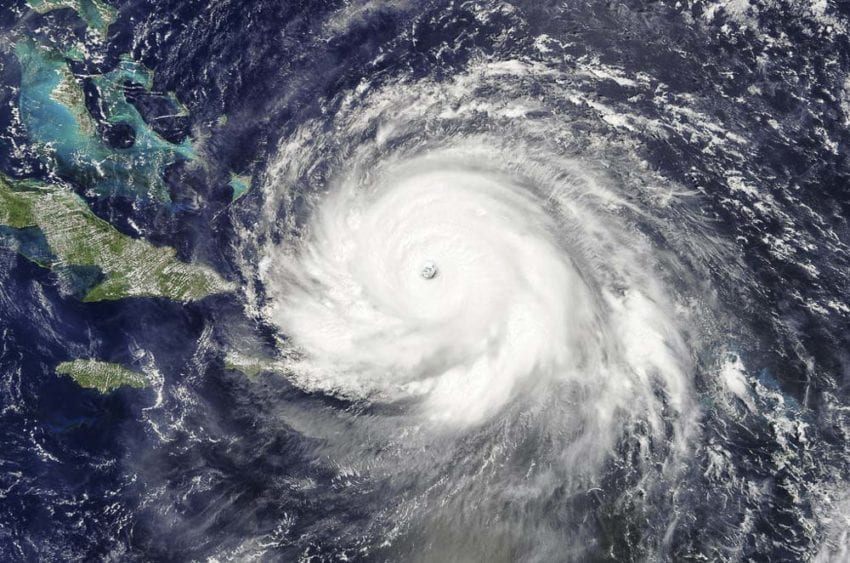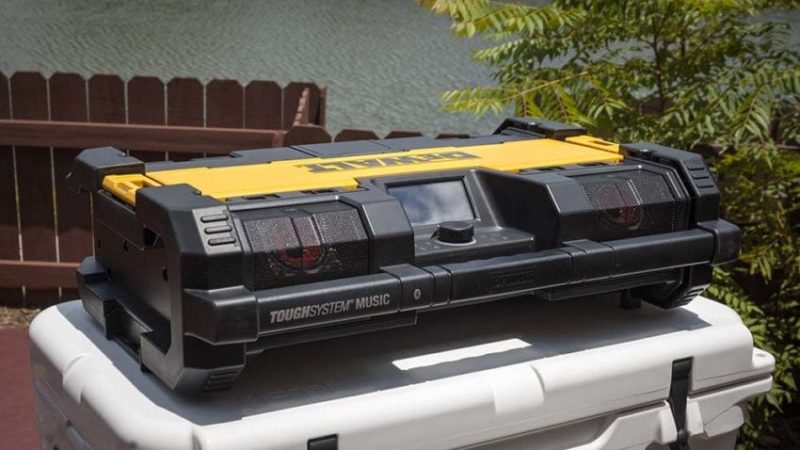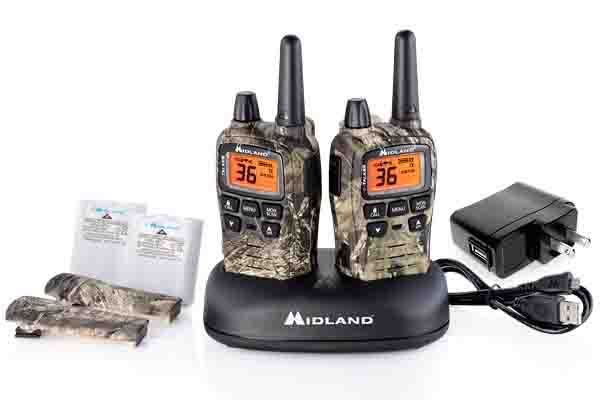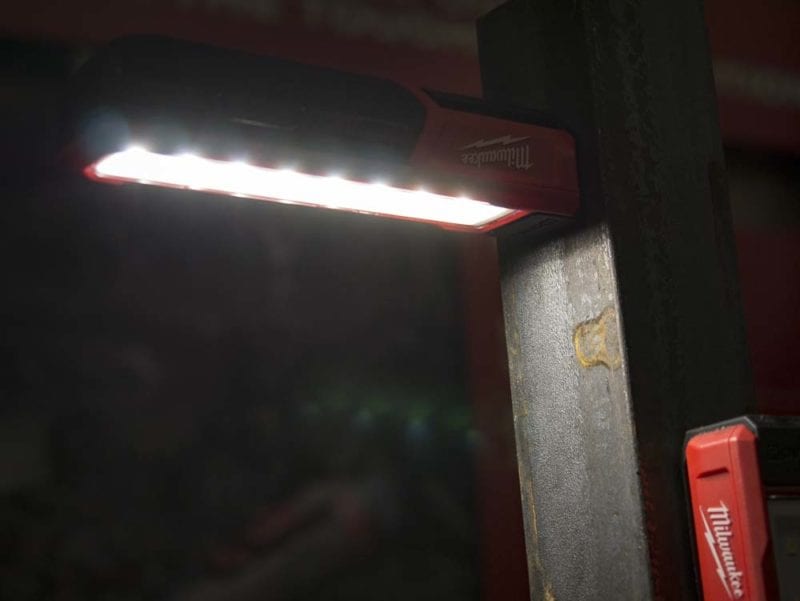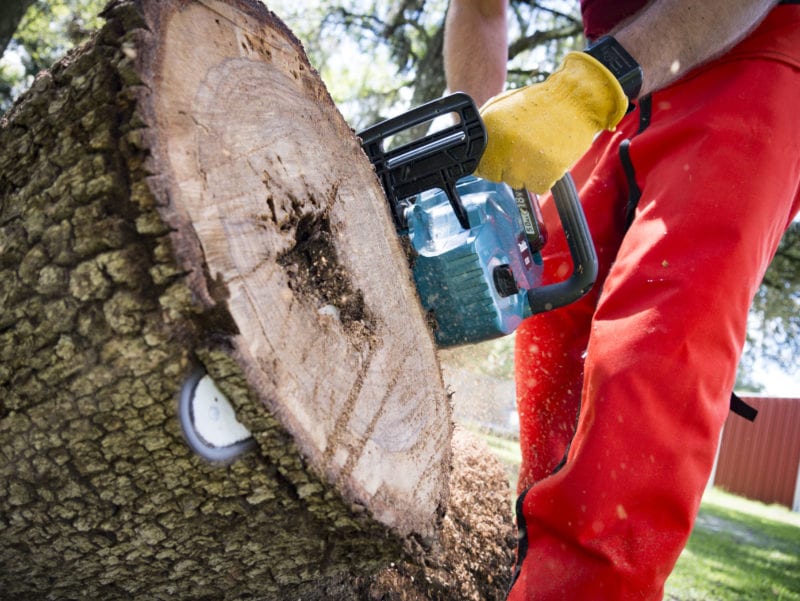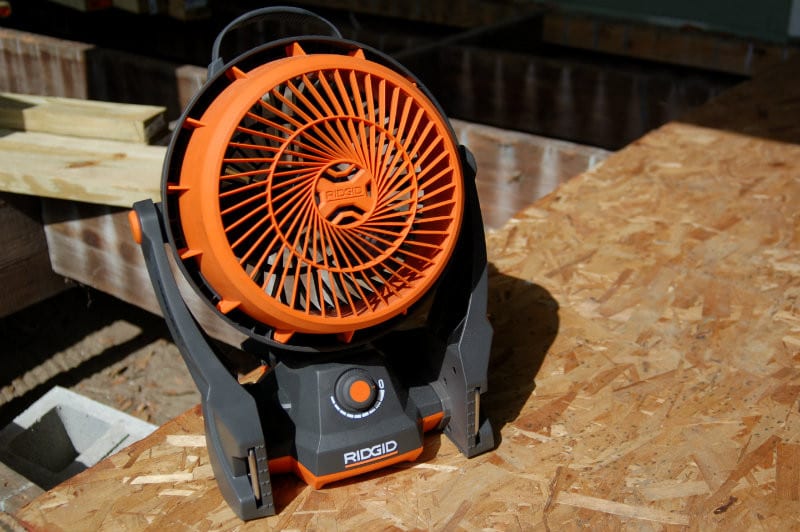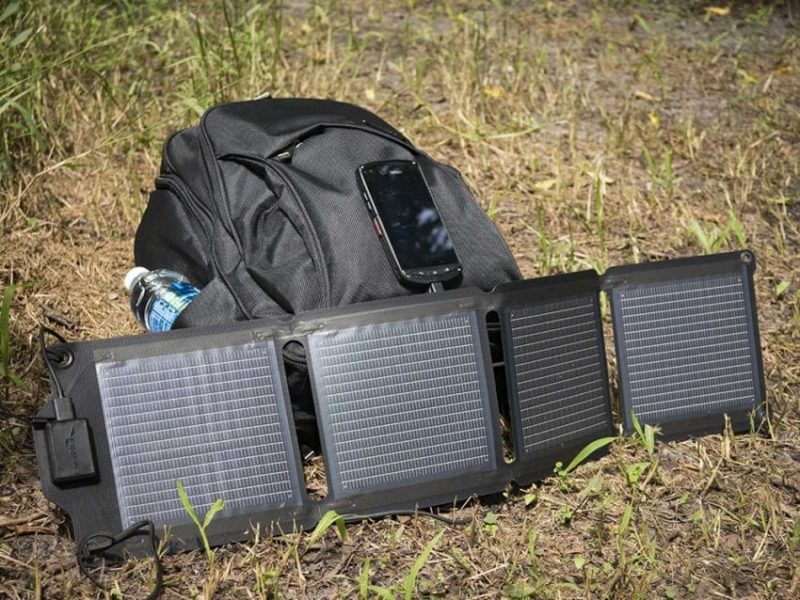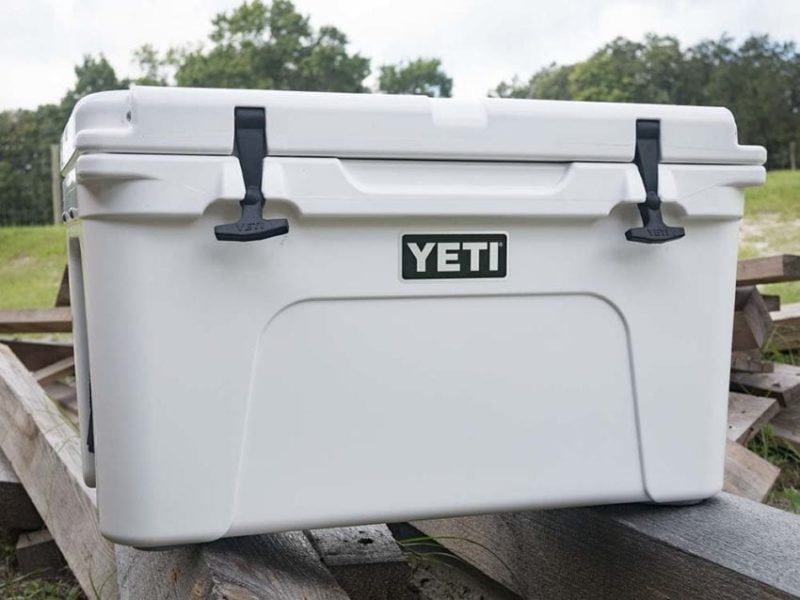Nearly every year we buckle down in Florida for the latest stream of hurricane craziness. It’s nothing to make light of—however, it also carries with it a sense of regularity. That regularity breeds people who take care to know how to prepare for a hurricane so they don’t have to panic when it hits. If you know anything about seasoned Floridians—we don’t tend to panic. This week, we’re preparing for Tropical Storm (potentially Hurricane) Idalia which is coming in from the west via the Caribbean.
Fair warning—this guide assumes an actual hurricane preparation methodology. We don’t intend to talk about stocking up for months of downtime. Unless we get hit during a time when we have a particularly inept governor (DeSantis has proven very adept at handling emergencies so far), most hurricanes—at their worst don’t result in more than a week of downtime.
When Hurricane Irma hit Florida on September 10 of 2017, almost 7 million residents lost power. That’s 64% of all customer accounts in the state. Most people found themselves out of power for less than four days. By day 9, only 1% still hadn’t had their power restored. Given those numbers and our decades-long history here—we plan to use 10-days as our goal for preparedness. If you want to ensure you can last 2-weeks that’s perfectly fine. However, while some people had to wait longer for power, grocery stores and most restaurants were up and running within the week.
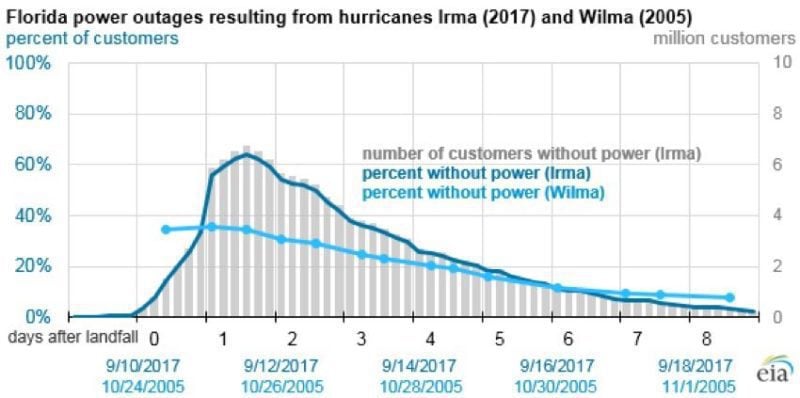
How to Prepare for a Hurricane Begins with Water
Since we probably have enough air…water, food, and shelter represent our Big 3. Hurricane preparation begins with water. Have about 1 gallon per person per day to cover both drinking and washing/rinsing. If you have a pool, or you can fill a bathtub, that can knock your water requirements down significantly since drinking water represents your only real need.
If some of your food requires water, add that into the equation. Be sure not to get stingy here. Bottled water and gallon water jugs last a good long time. There’s really no reason not to have a bunch ready that you can cycle through. There’s nothing worse than having to compete with the crowds for last-minute preparation.
How Much Food Do You Need to Prepare for a Hurricane?
Food isn’t difficult. However, you may not want to eat granola bars for 10 days straight. Because of this, plan a variety of foods and keep in mind that you should be able to go shopping after just a few days following a storm. Even if it takes a week, you should arrange your emergency meals in such a way as to give your family some variety when dealing with a hurricane. It may provide some much-needed fun and sanity during a difficult time!
Great food choices include any of the following:
- Canned goods (meats, fruits, and vegetables)
- Cereal
- Dried fruits
- Peanut butter & crackers
- Granola/protein bars and fruit bars
- Canned juices (smaller bottles)
- Shelf stable (non-perishable) pasteurized and/or powdered milk
- Comfort foods (we love goldfish, Oreo cookies, beef jerky, Slim Jims, Twizzlers, etc). Pull out a new treat each night.
Don’t forget to have baby food and/or formula if needed as well as a stockpile of wipes, diapers, etc. You don’t want to lack baby supplies if the power goes out!
The same goes for feminine hygiene products. Get a stock of those ahead of time for anyone in your family who needs them so you have them on hand.
You also want to make sure to have at least two filled 20-gallon propane tanks for the grill. It may be that you get access to fresh food at the store, but your home doesn’t have power for several days. Getting off rations and unprepared foods can really lift your family’s spirits.
Prepare Your Hurricane Disaster Kit
The next step in how to prepare for a hurricane centers around having a good “disaster kit”. A disaster kit includes basic things you need to cover in the event of most emergencies. It’s a bit more than a “go-bag” but it has the same flavor since the intent should be to keep it ready and rotate through it as needed.
Here’s what we recommend for your hurricane preparedness disaster kit contents:
- Basic tool set with sockets, adjustable wrench, and screwdrivers
- Extra batteries and fully-charged USB power banks (battery-powered jump starters work great for this)
- Manual can opener for those canned goods above
- Plastic/disposable dinnerware and straws
- Well-stocked first aid kit with Tylenol, Aleve, and Advil
- Lights, lights, lights! We recommend a few long-running, low output area lights as well as some bright spotlights and flashlights. You really cannot have to omany of these.
- Radio (hand crank models are nifty) in case cell phone service goes down
- Large contractor garbage bags
- Fire extinguisher
- Cash – have around $200/week for each member in your family just in case you need supplies from a local store and their system is down
- Books, cards, board games, puzzles, paper, pencils/crayons, and balls. You might have a lot of spare time to entertain your family—make the best of it!
Don’t Forget About Your Pets!
The last thing you want to do is watch your pet suffer because you forgot to provide for them during your hurricane preparation. Prepare for a hurricane early and don’t forget to grab enough pet supplies to last you the same 10-days.
Wanna Get Away? You Need Gas in Your Vehicle
One of the benefits we have of living in Florida involves the proximity we have to the entire state. Hurricanes can extend or spread up to 300 miles across. That means you might be as little as 150 miles away from a less-affected area at any given time.
If you have gas, and enough money for a hotel, you can take your family on the road and get away for a bit while the power company gets things back up and running. In terms of staying comfortable, that’s a huge win. Keeping your tanks topped off prior to a storm makes for one of our top suggestions since afterward you may have difficulty finding fuel due to the widespread use of generators.

Tools You Need for a Hurricane: During the Storm
Since we’re a power tool reviews publication, we wanted to provide a list of the tools you want on-hand during a hurricane or big storm. The tools on this list represent products we actually put to use during and after the storm, not some hypothetical list.
When Hurricane Irma came through Central Florida, we ended up directly in the path as it shifted from East coast strike to West coast strike. Finally, of course, it settled on coming directly through our hometown of Lakeland. As we persevered through the storm, cleaning up the mess, we compiled this list of tools you need for a hurricane. For that matter, many of these are also applicable for post-tornado or even blizzard cleanup.
Check out how power crews prioritize power restoration after a storm!
The aftermath of the storm is the most uncomfortable in many cases, but you have to survive first. Fortunately, Hurricane Irma wasn’t nearly as strong when she hit us as it was in the Caribbean. There’s not a lot of work you can or should try to do while the storm is raging. Rather, we have some tools you will want to keep close by for safety.
Milwaukee RedLithium USB Flashlight
Lighting is your best friend once the power goes out. We use a lot of Milwaukee USB Rechargeable Flashlights. They help in two specific ways. First, they let you easily check for damage when hearing trees crack and objects hitting the roof of the house.
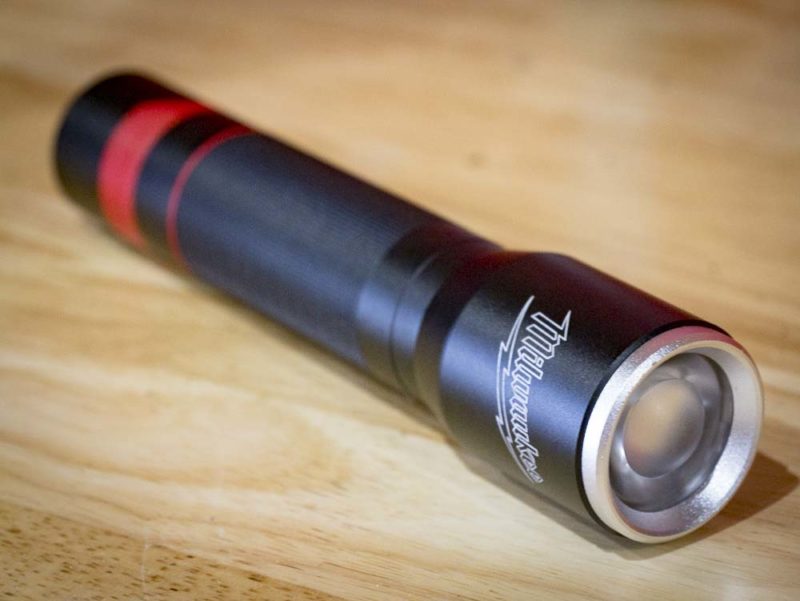
Second, with the light pointed up at the ceiling, it reflects enough light to fill the entire room. It worked well for playing board games or just watching the concerned looks on everyone’s faces.
DeWalt ToughSystem Music + Charger Radio
Our local country station switched to full coverage of Hurricane Irma during the 24 hours the storm was moving through. But we lost power just a couple of hours into it thanks to a tree that went down a few streets over. Using a DeWalt 20V Max battery pack, we were able to stay informed and get the latest information. Plus, I can’t think of better how to prepare for a hurricane advice than to crank up the tunes!
Midland X-Talker Two-Way Radios
When a storm goes through, you have to assume that you’ll lose power and cell service. Midland’s X-Talker two-way radios give us 36 channels and tons of privacy codes along with up to 38 miles of range to stay in contact without being overheard or jamming up the radio spectrum.
But what we used more than anything else is the NOAA weather radio feature. Tornadoes often spawn from storms like this. We felt it important to know if they would impact our neighborhood.
Tools You Need for a Hurricane: After the Storm
Milwaukee Personal Lighting
You may know how to prepare for a hurricane before the storm—but what about after? Between the flashlight, flood light, and headlamp, you have everything you need to cover just about any situation once the sun goes down. The work doesn’t stop in those first 24 hours as you help neighbors get trees off of roofs and cars. A good headlamp and flashlight are critical. Once the work is done for the night, the floodlight works perfectly for lighting up a game of Risk or helping you access breaker panels.
Chainsaws
With 4 houses to cover along with a couple of churches, we used a lot of battery-powered chainsaws in various locations around the city. It goes without saying that you’ll need them, but the pop-the-battery-in-and-cut nature of cordless power had us working while everyone else was still trying to get their saws started. When we tell people how to prepare for a hurricane we never forget to mention these excellent tools.
Makita 18V X2 LXT Chainsaw
The Makita XCU03 Chainsaw really served as a workhorse! I have three sets of 5.0 Ah batteries to go along with the saw. They were enough to last through the day. Day one was all about digging houses and cars out from under trees. After charging the batteries overnight, day two had us cleaning up yards. On both days, I cut limbs as large as 12-inches in diameter. With only a little downtime to adjust chain tension, add oil, and clean out the saw a few times, this saw handled the vast majority of my work.
The other chainsaws below weren’t called on to do quite as much work in their locations, but each performed admirably in spite of local skepticism that a battery-powered chainsaw could do the job.
- EGO 16″ Chainsaw
- Husqvarna T535i XP Chainsaw
- Greenworks 60V 18-inch Chainsaw
- DeWalt FlexVolt 60V 20-inch Chainsaw
Overland Battery-Powered Wheelbarrow
With all this debris to clean up, you have to move it for either pick-up or disposal. Overland’s battery-powered wheelbarrow saved Tim Johnson some serious back pain by moving his oak cuttings to the burn pile with ease.
Gas Grill
While we love our Traeger Pellet Smoker Grill, you really benefit from having something that works solely off propane during a storm. For us, that’s something like a Big Green Egg Kamado or (for much less investment) the Oklahoma Joe’s Firecraft Charcoal Grill. Propane and/or charcoal grills effectively replace your oven after a hurricane. You may know how to prepare for a hurricane with just the necessities—but who wouldn’t rather grill than bake?! Even if you suffer through some heat and inconvenience, at least you’ll eat well!
Cordless Fans
When it’s time to call it a night and get a few hours of sleep, opening the windows and generating a cool breeze will help you recover well before the next day. We put three different fans to use to keep cool at night. Using the fans on Low lets you use one 4Ah or 5Ah battery for at least two nights.
Battery Adapters
With no power, we took advantage of every USB charging adapter we own to convert power tool battery packs into cell phone power sources. Milwaukee (both M12 and M18), Ridgid, and DeWalt were all invited to the party. And when things were looking like I may run out, I even turned to my EnerPlex Kicker IV Solar Charger.
Yeti Tundra 45 Cooler
5 days’ worth of cooling with no power? Yes, please! The trick to maintaining food is to keep it cold until you need it. Freezers can stay cold for more than 24 hours, but refrigerators will only be good for about 4. Moving perishables to our Yeti allowed us to keep things like milk, cheese, and eggs from going bad until we consumed them.
Just be cautious – every time you open the cooler, you reduce the time you can keep the ice. So either have a plan to get more or plan on eating and drinking everything within the first three days if you’ll be in and out of it a couple of times a day.
EGO Nexus Power Station
Having a Yeti or Orion cooler to keep perishables from going bad is great, but it’s better to just keep the fridge running if you can. The EGO Nexus Power Station battery-powered inverter runs a mini refrigerator for up to 2 days depending upon how efficiently it runs. Stretch that runtime even further with the use of solar panels. You can connect a maximum of 180 watts of solar to the Power Station.
I ran it during the day, then took it to a friend who had power available to charge it overnight. It’s not a perfect solution. For just 6 to 7 hours of runtime, I needed around 13 hours to recharge four 7.5Ah battery packs. Using solar panels takes even longer to charge (as much as a couple of days). Still, it helped keep all the meat in my freezer completely frozen during a shorter power outage.
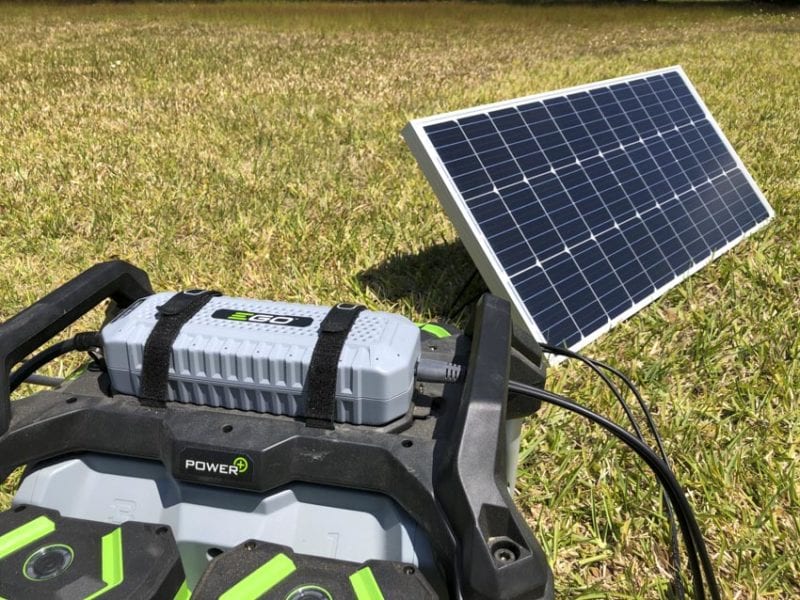
The Bottom Line When You Prepare for a Hurricane
Obviously, no one likes hurricanes. They present a mild inconvenience at best and a dangerous life-threatening situation at worst. The least you can do is help prepare your family for when a hurricane comes. In the South, it’s something we learned after the first few years of being in the area.
While we recommended a lot of preparation items and even some cool tools—there are things that might show up on some preparation lists that we didn’t include. Once hardware stores and lumber yards open back up, there’s plenty of damage to repair and rebuilding to do. That’s another story.
As far as the basics of how you prepare for a hurricane, that ‘P’ word reigns supreme (as it does in many things in life).
You MUST prepare. Don’t wait until the last minute to get what you need. Hopefully, this list will help you care for your families as well as your neighbors. Most importantly, we want everyone to stay safe.
When Irma came through our neighborhood we were fortunate. Utility crews moved safely and quickly through our city, and food loss was minimal. We even managed to stay relatively comfortable while we helped those around us. That’s a huge win in our book.
If we missed something, be sure to leave it in the comments below—we may just add it to our recommended list!

